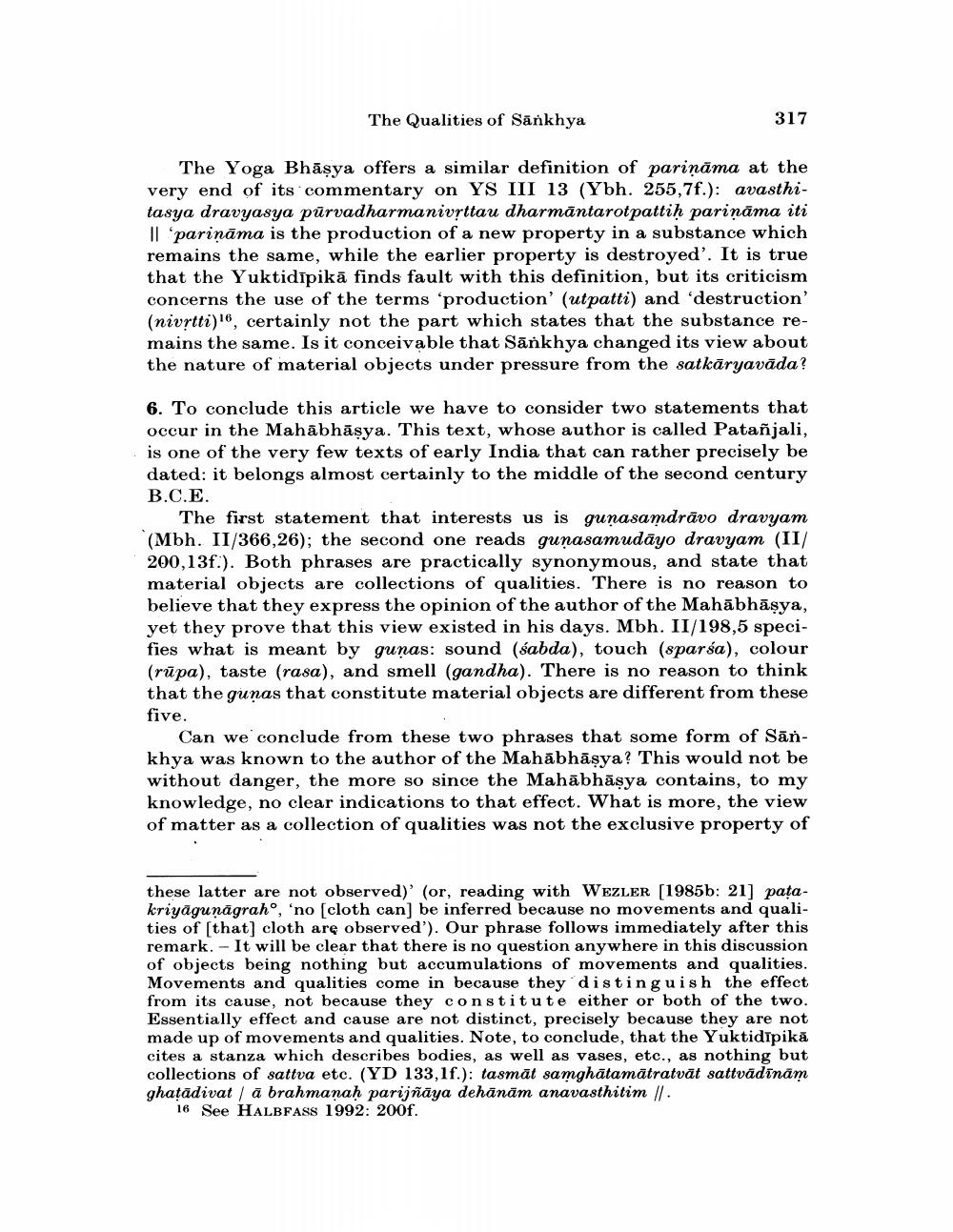________________
The Qualities of Sankhya
317
The Yoga Bhasya offers a similar definition of pariņāma at the very end of its commentary on YS III 13 (Ybh. 255,7f.): avasthitasya dravyasya pārvadharmanivṛttau dharmantarotpattiḥ pariņāma iti I 'parinama is the production of a new property in a substance which remains the same, while the earlier property is destroyed'. It is true that the Yuktidipika finds fault with this definition, but its criticism concerns the use of the terms 'production' (utpatti) and 'destruction' (nivṛtti)16, certainly not the part which states that the substance remains the same. Is it conceivable that Sankhya changed its view about the nature of material objects under pressure from the satkāryavāda?
6. To conclude this article we have to consider two statements that occur in the Mahabhāṣya. This text, whose author is called Patañjali, is one of the very few texts of early India that can rather precisely be dated: it belongs almost certainly to the middle of the second century B.C.E.
The first statement that interests us is gunasamdravo dravyam (Mbh. II/366,26); the second one reads guṇasamudayo dravyam (II/ 200,13f). Both phrases are practically synonymous, and state that material objects are collections of qualities. There is no reason to believe that they express the opinion of the author of the Mahabhäṣya, yet they prove that this view existed in his days. Mbh. II/198,5 specifies what is meant by gunas: sound (sabda), touch (sparsa), colour (rupa), taste (rasa), and smell (gandha). There is no reason to think that the gunas that constitute material objects are different from these five.
Can we conclude from these two phrases that some form of Sankhya was known to the author of the Mahābhāṣya? This would not be without danger, the more so since the Mahabhasya contains, to my knowledge, no clear indications to that effect. What is more, the view of matter as a collection of qualities was not the exclusive property of
these latter are not observed)' (or, reading with WEZLER [1985b: 21] patakriyagunagrah, 'no [cloth can] be inferred because no movements and qualities of [that] cloth are observed'). Our phrase follows immediately after this remark. It will be clear that there is no question anywhere in this discussion of objects being nothing but accumulations of movements and qualities. Movements and qualities come in because they distinguish the effect from its cause, not because they constitute either or both of the two. Essentially effect and cause are not distinct, precisely because they are not made up of movements and qualities. Note, to conclude, that the Yuktidīpikā cites a stanza which describes bodies, as well as vases, etc., as nothing but collections of sattva etc. (YD 133,1f.): tasmāt samghātamātratvāt sattvādīnām ghaṭādivatā brahmanaḥ parijñāya dehānām anavasthitim ||.
16 See HALBFASS 1992: 200f.




